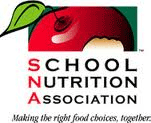"For generations, kids have toted UNICEF's collection boxes door to door on Halloween, calling out "Trick-or-Treat for UNICEF!" They have raised over $170 million since 1950 to help children worldwide - funds enabling UNICEF to save and improve children's lives by providing health care, improved nutrition, clean water, education, and more."
I Transformed This Dark, Dated Dining Room with the Most Unexpected Color
-
The old chandelier was incredibly heavy. *READ MORE...*
8 hours ago























.jpg)
